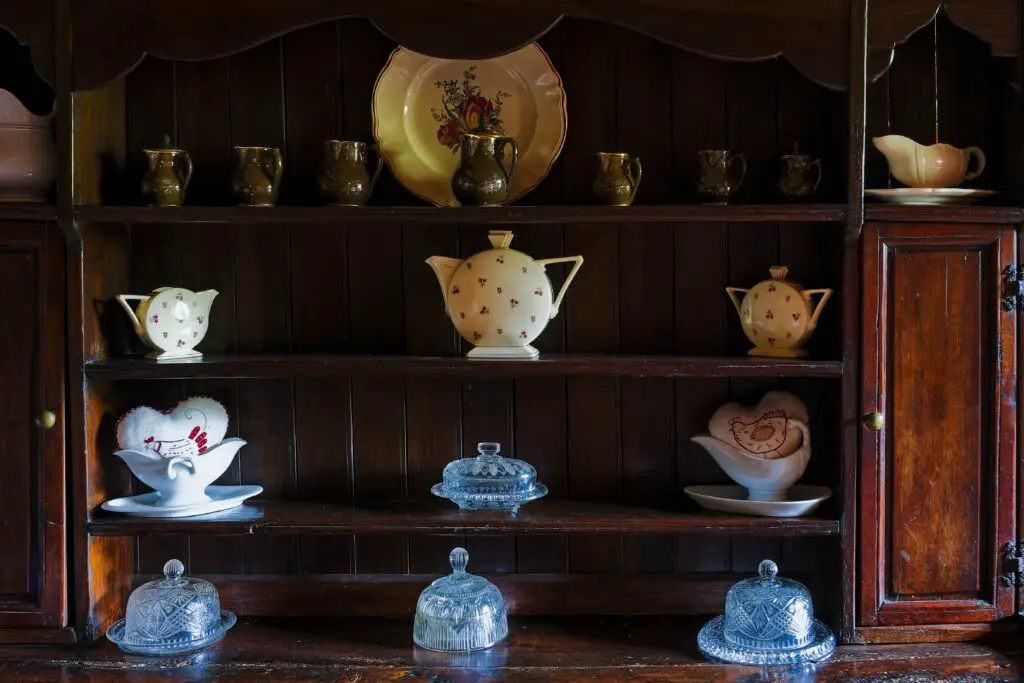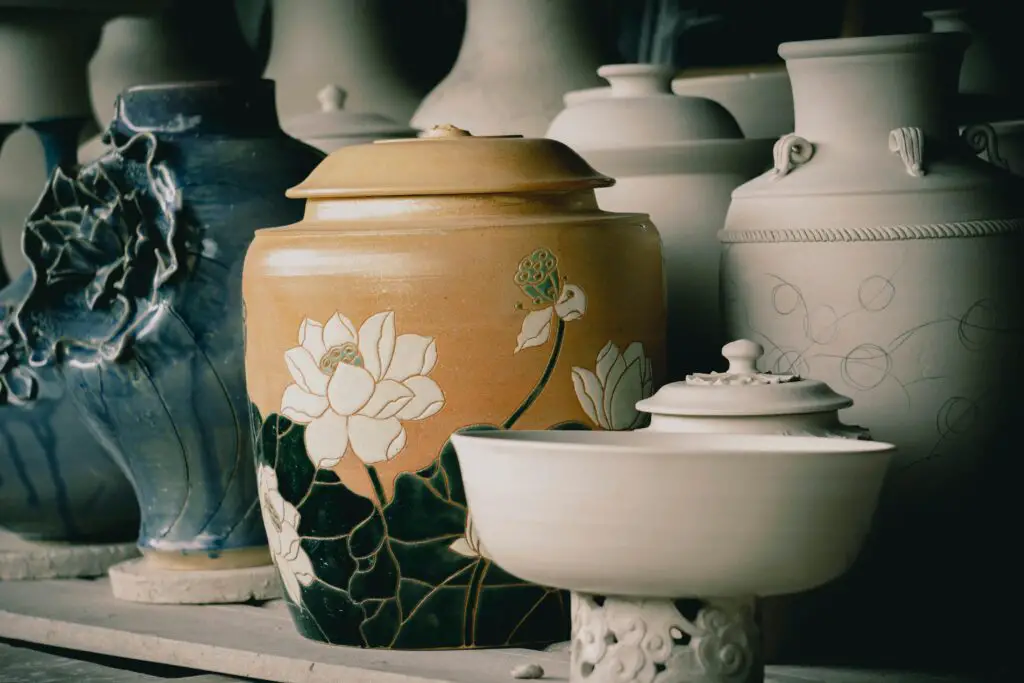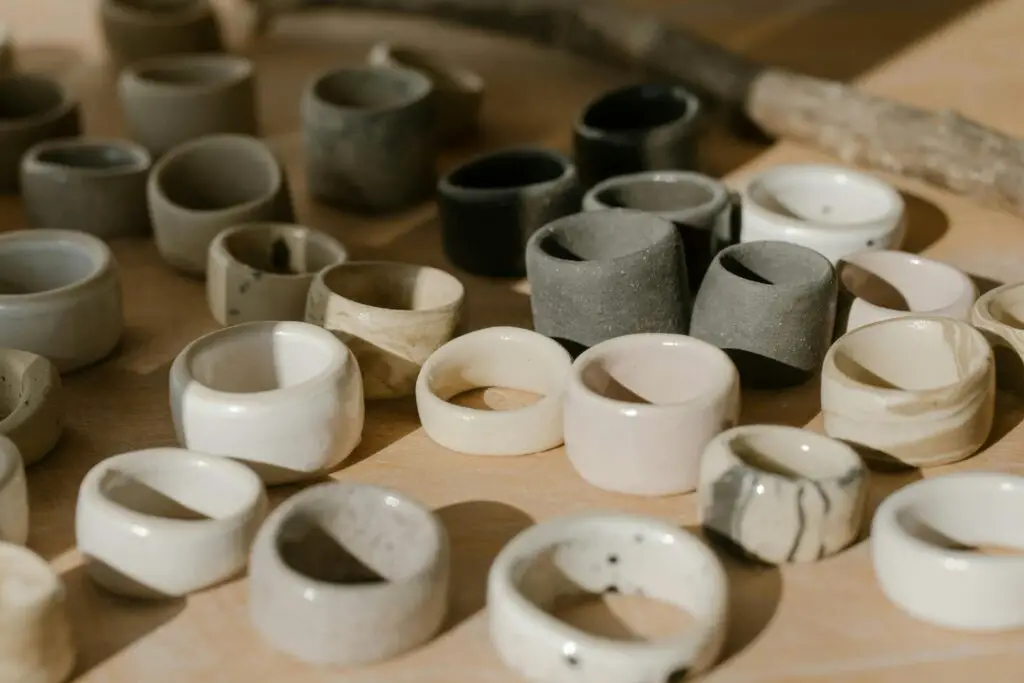Learn the Makers and Marks

Before diving into vintage pottery, familiarize yourself with the major makers and their marks. Research brands like McCoy, Roseville, and Hull, and study their unique stamps or signatures. Knowing the marks will help you quickly identify authentic pieces and avoid imitations.
Start Small and Build Your Collection
It’s easy to get overwhelmed by all the beautiful pieces out there, so start small. Begin with one or two pieces from a specific maker or style you love, then expand as you gain confidence and knowledge. This approach helps you focus and build expertise over time.
Inspect for Damage
Pottery is fragile, and even the smallest crack or chip can affect its value. Always inspect vintage pottery carefully—run your fingers over the surface to feel for cracks, check the base for chips, and hold it up to the light to spot any hidden flaws.
Understand Glaze Crazing
Crazing refers to tiny cracks in the glaze of vintage pottery. While it’s often seen as a sign of age and character, excessive crazing can weaken the piece. Know the difference between natural wear and damage that might reduce the piece’s value.
Focus on What You Love
Collecting vintage pottery should bring joy. Instead of focusing on trends or potential resale value, collect pieces that speak to you. Whether it’s a bold color, unique shape, or intricate design, finding pottery that resonates with your personal style makes your collection more meaningful.
Know the Difference Between Hand-Painted and Mass-Produced
Hand-painted pottery often has more charm and uniqueness than mass-produced pieces. Look for brush strokes, slight imperfections, or variations in design—these indicate the piece was crafted by hand, adding to its value and appeal.
Check the Base

The base of a vintage pottery piece can reveal a lot about its authenticity and condition. Look for maker’s marks, hand-signed signatures, and signs of wear that indicate age. A smooth, unmarked base could be a sign of a reproduction.
Research Pottery Styles
From Art Deco to Mid-Century Modern, vintage pottery spans a wide range of styles. Educate yourself on the different styles and the time periods they represent. Knowing the design elements of each era will help you identify pieces more easily and appreciate their historical context.
Watch Out for Reproductions
With the popularity of vintage pottery, reproductions have flooded the market. Be wary of pieces that look too perfect or lack wear. Authentic vintage pottery often shows signs of age—faded colors, slight crazing, or small imperfections from handcrafting.
Buy from Reputable Sellers
When you’re just starting out, it’s best to buy from trusted sources like antique shops, established dealers, or reputable online platforms. They’re more likely to offer authentic pieces and can provide valuable information about the pottery’s history.
Attend Pottery Shows and Auctions
Pottery shows and auctions are great places to learn more about vintage pottery and discover rare pieces. You’ll meet knowledgeable collectors, see a wide range of pottery styles, and get a feel for the current market value of different makers and designs.
Keep a Pottery Journal

As you collect, keep a journal documenting your pieces. Include details like the maker, era, condition, and price. This will help you track your collection’s growth, monitor market trends, and provide important information for future sales or appraisals.
Display Your Collection with Care
Vintage pottery deserves to be showcased! Display your pieces where they can be admired but protected. Keep them out of direct sunlight to prevent fading, and place them in secure areas to avoid accidental damage. A well-displayed collection adds to the enjoyment of your hobby.


